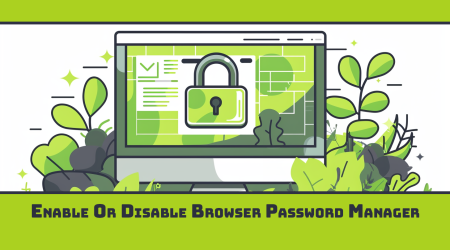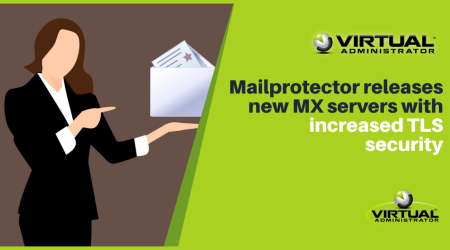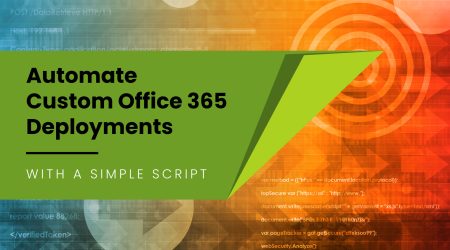One of the first major decisions every MSP must face is what to do with all the information they collect, and how to track and bill for the tasks that their clients need. Relying on email and calendar entries, or scribbling down phone numbers and IP addresses on various unlabeled sticky notes strewn around the office, isn’t conducive to a functioning managed services provider.
A PSA (Professional Services Automation) tool is basically just a giant database to help with the day-to-day operations of an MSP. But finding the right one can be a time consuming task. And setting one up can be even more labor-intensive.
We’ve always referred to Connectwise and Autotask as the “Coke and Pepsi” of the industry. They are juggernauts and offer many features that are geared towards running a Managed Services shop. But there are literally hundreds of other CRM, Marketing, and Ticketing tools on the market. Finding one that jives with how your company runs is always a good idea.
Here are a few things to think about when making this critical decision on selecting your first PSA.
1.) The Cost
The first thing most people consider is the cost of the PSA. While I’m not entirely sure that this is the most critical consideration, it is often forefront on people’s mind. Many tools charge on a per-user per-month basis so that monthly expense that seems rather low for the 1-2 man shop can quickly accelerate out of control should you strike upon success and end up with 10, 50, or 100 employees under your command.
As we’ll discuss in our next consideration, startup time can be a big factor in picking the proper PSA tool, but it may be a good idea to consider a short term option if pricing is going to be an issue. You will be able to save some money in the short term by applying a little elbow grease in the future to switch to something better suited for your company.
But it is important to remember that this is going to be your key tool in the day-to-day operation of your business. You are going to spend more time working with your PSA tool than any other software package (with the possible exception of your RMM tool) in your organization. I would personally recommend you don’t skimp on price when it comes to selecting your PSA tool.
Which brings me to my second point:
2.) Setup time
The most annoying thing about any PSA is the setup process. I won’t sugarcoat it for you, it is going to be time-consuming and difficult. If you don’t stick with it over a prolonged period of time you will find yourself struggling to get any benefit from the software.
PSAs can only help you if you actually use them on a day-to-day basis, that means putting in some up-front investment into setting them up properly.
For some tools, it can be a bit easier to set them up than others. There is also a learning curve to using the software.
Software like ConnectWise can have a pretty steep learning curve and can take a fair amount of time to structure properly. However, they can be peanuts when compared to software solutions like Salesforce which can take months to setup properly.
But then there are other solutions which can take quite a bit less time to get going with. Cloud solutions like Zoho or CapsuleCRM can be quick and easy to get rolling with. They aren’t as focused on MSPs so you might find some inconsistencies between how they operate and how your business runs – but if you’re finding it difficult to set aside the proper time to flesh out your PSA solution it may make sense to target a simpler software until you can break away to setup something a bit more customized to your needs. Any of these are better than “Post-it notes”!
Often complexity in setup translates into a more comfortable fit for your MSP. The PSA will be more in tune with your business processes and be less of a bother to work with in the long run. A simpler setup often means that the software is more rigid. It will be more difficult to get customizations later-on down the road.
Of course, this is more a rule-of-thumb and nothing hard and fast. It is easy to consider the setup time to be a waste of time, but often it can be well worth it in the long run.
Be aware that you may find that the PSA you chose doesn’t really fit the needs of your company and you find yourself out looking again. It is easy to overlook small nuances in how a PSA operates and only learn of them after the fact. An in-depth setup will help you weed this stuff out before it becomes critical to the operation of your business and it will also help you know what you’re looking for the second time around.
Don’t be afraid to get out there and get your hands dirty with one or two packages. You can consider the setup time to be a thorough test of the software’s viability in your MSP.
3.) What Data Do You Need To Track?
A PSA is a combination of several utilities:
- CRM and client address book.
- Ticketing and Ticket Management.
- Marketing tools and automation.
- Billing, Invoice tracking, and billing automation.
- Asset tracking and procurement.
- Project Management software.
As you can imagine, this is a monstrous amount of information to track. Doing this all in one piece of software can be extremely appealing, and for good reason. You won’t have any difficulty keeping track of every interaction you have with your clients when you can see everything you’re doing with them at a glance.
The downside, though, is that one software that does it all often finds itself a a master of nothing. If you are building a sales organization, you will likely find that you don’t want to load the 10,000 company prospect list you just bought, inside your PSA, it is just too messy, and there are better tools out there to automate marketing (i.e. Infusionsoft), but once they become a customer, the information belongs in your PSA.
Here at Virtual Administrator we’ve found it very easy to group billing together into its own category, marketing and sales goes together, and service and support go together. It Is often easier to use one software to manage all three categories, but it is possible to split into up to three software packages to handle each of these primary categories. Splitting it down any further and you run the risk of creating too much fracturing in your client information.
Many cloud solutions break their PSAs apart into these categories. Solutions like Fresh Desk and Fresh Books, or Zoho’s suite of tools are good examples of organizations who draw a clear line between providing support and handling billing.
Deciding what information you want your software to track will give you a chance to determine its strengths from the get-go. Prioritize the list above, and determine what is most important to you. You may find that many of the “features” that any given PSA has, are not important to you right now. But all things being equal, having some options for growth is nice!
4.) Does it “Integrate”?
This is almost a question of popularity. Popular software tends to integrate better than brand new solutions. But the more important question is “what do I want to integrate with, and how?”
There are two primary integrations we like to have when working with our PSA tool.
First is the integration between ticketing and RMM. When alerts are generated or tickets are entered, it should correctly identify the proper client associated with those alerts and tickets. This means that there needs to be a type of sync between the ticketing and RMM tool, second is the integration between Billing and ticketing, and your RMM. Even if you aren’t billing clients for every little scrap of technology at their location, being able to track and understand where you are spending your time and money with a client can be huge towards controlling your “Cost of Business”. Billing integration allows you to “add-up” total machines to update your billable quantities, Ticketing integration allows you to associate a ticket generated by a user or RMM with a specific machine. If you’ve adopted the insurance-based MSP 3.0 model of doing business then your profit will go up when you decrease expenses. Learn to track expenses and your business will grow.
I’ll be honest, many solutions seemed to have figured out the integration between sales, ticketing, and RMM but few PSAs seem to make billing and asset tracking a priority. We have actually become proficient programmers here at Virtual Administrator just to track our own data. We have written extensive billing applications to synchronize data between Kaseya and ConnectWise and have expanded them to some of our other services such as Mailprotector. (Interested in getting access to some of this? We actually offer pieces of it to our partners. Check out KCSync).
But this all boils down to the primary question: is data synchronization important? The answer is “yes and no”. If I have learned anything here in my time at Virtual Administrator, it is that a little elbow grease and hard work is worth it. Sometimes in the search for automation we spend more time than if we had just sat down and done the work manually.
Working inside of an MSP means you will need to learn that balance about when you should try to automate and when you should just sit down and “git’r done”. Integration is one of those things which is nice to have, but far from mandatory to run a successful IT company. In fact, we have partners that run all of their data through spreadsheets in Excel. There is zero hope of any integration there.
So take this all with a grain of salt. You may find that integration is something to tackle down the road. Right now just pick a PSA that might have some good possibilities for integration in the future.
So what are our PSA recommendations?
Kaseya has an up-and-coming PSA tool called “Kaseya BMS” which offers a fast startup time and simple layout which can work very well with smaller MSPs. It is also reasonably priced. Their integration with Kaseya is pretty good if you are on their Saas servers. We’re working with them to improve their integration with our Hosted Kaseya environment (Go!Manage).
I would also recommend you look into ZOHO’s suite of tools. While not written specifically for MSPs, I’ve found their backoffice tools to be invaluable. They are also masters of integration and while they may not integrate with your RMM tool off the bat, they will automatically import all your bank statements into their accounting tool. (I may have done a year’s worth of bookkeeping in a day earlier this year during tax season…. Shhh…. Don’t tell Uncle Sam).
We have several partners using Freshbooks, Freshdesk, and also Zendesk. These solutions are not the cheapest out there. But what I love about Cloud Services is their willingness to make data available on all platforms. You’re just as capable of working on your smartphone as you are on your i7 powered desktop with the 60” 4K TV sitting 2 feet from your face (Kyle, our programmer may have stepped overboard slightly with his technology purchases). Web interfaces free you from the office and you can do your work on the road or outsource it entirely.
Finally, as you well know, we are big Kaseya fans. Until recent years we would often point people towards ConnectWise. But massive startup times, difficult learning curves, and an increasing reluctance to integrate with anything outside of Labtech has lessened our enthusiasm for the software. ConnectWise is still a reasonable choice for larger MSPs however, and this list would be incomplete without it.
What about Autotask or Tigerpaw or even Salesforce? Unfortunately, our experience with these tools is limited at this time. I would love you hear your thoughts in the comments below.
What PSA tools are you using? What have you found to be the strengths in your solution? What are your primary complaints? I’d love to hear in the comments what your thoughts are. I wish I could create a comprehensive list of solutions but there are hundreds out there. It may be something I start doing slowly, however. Don’t be afraid to give a plug to your favorite PSA in the comments!
Here are two other resources to help you get started:






